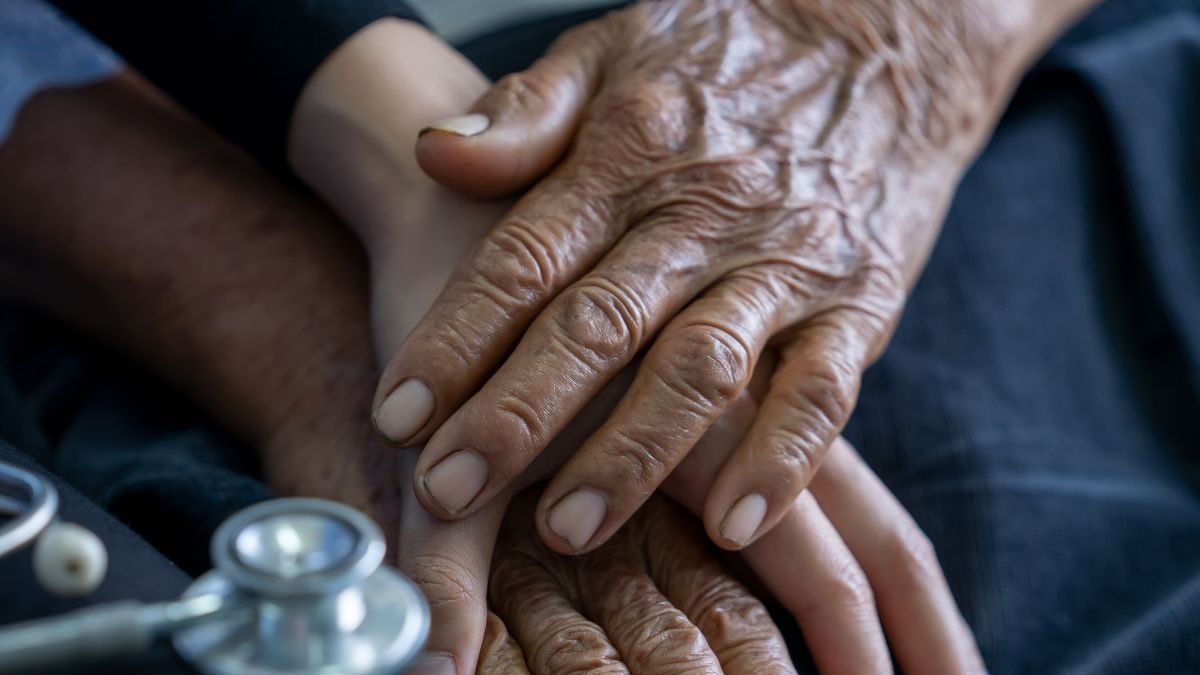[ad_1]
The diagnosis of Parkinson’s Disease usually comes as a major blow for anyone. One of the most rapidly growing neuro-degenerative conditions, it has both motor and non-motor manifestations. Conventional treatments — dopamine replacement and deep-brain stimulation — are effective in the early stages but as it progresses, the disease develops resistance to these. Hence, the course of the disease remains unaltered. Regular exercise can help to slow its progression, but patients have limited ability to engage in intense activity.
It is here that Yoga therapy holds significant promise. Yoga’s mild stretches are suitable for patients of Parkinson’s Disease (PD) and several studies have shown it to be a useful ally alongside conventional treatment, with positive effects on motor coordination, balancing, mobility, anxiety, depression, and overall quality of life.
So far, however, this evidence was of short-term nature. Would Yoga really be of help in the long term also? To see Yoga’s effectiveness for PD in the long term was the purpose of a recent research study.
What’s the New Research?
A longitudinal, randomised controlled clinical trial (RCT) was conducted at Anvesana, a centre for advanced research in Integrative Medicine at SVYASA University, Bengaluru. The 18-month study concluded in March this year has found evidence that sustained Yoga practice aids in slowing disease progression in early Parkinson’s Disease.
“We saw improvement in all aspects of the disease over the period of the study. This demonstrates the need and desirability of Yoga intervention in early Parkinson’s Disease,” says Parameshwar Some, author of the study, who has over 15 years’ experience in administering Yoga therapy to patients with neurological disorders.
Given the long-standing nature of Parkinson’s Disease, the implications of this study provide a large measure of hope and cheer for PD patients and their families. “Usually, patients get better within 2-3 weeks of therapy: tremors almost disappear, they are able to walk and write, facial rigidity improves, and many other forms of relief are seen. But once they go back home, they discontinue the practices and lapse back into their original state. So, the issue is adherence to the protocol. We devised this trial in a way that patients could benefit even after they returned home,” explains Some.
The study used a mixed contact and home-based approach to deliver Yoga intervention. A total of 160 patients were divided into groups — an ‘adjunct Yoga’ group and a ‘standard of care’ group. The Yoga group received 21 daily-contact Yoga sessions of 60 minutes, 3-5 days a week at the centre. This was followed by home-based sessions under supervision in tele-mode via online sessions (40 sessions), and then at-home self-practice (180 sessions). The other group remained on conventional drug-based treatment. There was follow-up at regular intervals.
After 72 weeks, both groups were compared. The group taking only conventional treatment showed almost no improvement. In the Yoga group, the two-third patients who completed the trial found they were able to manage the disease and had improvement in their sleep, psychological and quality-of-life issues. (See table)
“This is good news, as we now know that if yoga-based interventions could be provided in home settings, we can manage symptoms in PD in the long term,” says Some.
Symptoms Tally Over the Trial Period – Some Illustrative Examples
(Higher scores indicate poorer wellbeing)
*Names have been changed to protect privacy of participants
**Cumulative Scores, after assigning 0, 1, 2, 3 to each symptom; where 0 means `no symptoms’, 1 is `mild’, 2 is `moderate’, 3 is `severe’
Symptoms Set 1: Includes Speech, Tremors, Facial expressions, Rigidity, Hand movement, Legs agility, Posture, Gait, Postural stability, Body bradykinesia and Hypokinesia
Symptoms Set 2: Intellectual impairment, Thought disorder, Depression, Motivation
Symptoms Set 3: Speech, Salivation, Swallowing, Handwriting, Kitchen work, Dressing, Hygiene, Falling, Freezing when walking, Sensory complaints
Symptoms Set 4: Feelings of fear, lack of support, being ignored, embarrassment, worry, lack of confidence; poor memory, concentration; spasms and pain, heat and cold; distressing dreams
Yoga Therapy Regimen for Parkinson’s Disease
The stretching and extended physical poses make limbs and joints flexible, reduce rigidity, and increase muscle strength. Yoga also improves oxidative stress and promotes neuroplasticity in depression. Quality of life gets better, and sleep and anxiety crises lessen.
The one-hour sessions included preparatory loosening exercises (5 min) followed by postures (30 min), relaxation (2 min), breathing practices (12 min) and meditation (5 min).
Poses included:
• Ardha Uttanasana (Standing half-forward-bend pose)
• Parsva Uttanasana (Forward-bend pose)
• Utkatasana (Chair pose)
• Urdhva Prasarita Padasana (Upward extended feet pose)
• Pascimattanasana (Seated forward bend)
• Virabhadrasana (Warrior pose)
• Prasarit Pada Uttanasana (Intense Leg Stretch Pose)
• Vrikshasana (Tree pose)
• Setubandhasana (Bridge pose)
• Jatara Parivritti (Knee bend)
• Apanasana (Knee-to-chest pose)
• Utthita Trikonasana (Extended triangle pose)
• Utthita Parśva Konasana (Extended side-angle pose)
Breathing Exercises included:
• Kapalabhati
• Sectional Breathing
• Bhramari
• Nadanusandhana
• Guided meditation
Yoga can effectively manage symptoms, is cost-effective and has few side effects. If PD patients can remain active in daily and recreational activities, time and effort spent in daily Yoga practice is worth its while.
(Please note: This article is meant for educational purpose only. Before attempting Yoga, get a go-ahead from your physician/medical care provider, especially persons with recent surgical interventions, arthritis, and cardiovascular or musculoskeletal disease. Do not try any of the exercises without first learning from an experienced Yoga teacher, preferably at a Yoga Therapy school.)
This is the first of a two-part series on Yoga for the Long-term in Parkinson’s Disease. Watch out for the next part on details and description of the Yoga practices next week.
The author is a journalist, cancer survivor and certified yoga teacher. She can be reached at swatikamal@gmail.com.
[ad_2]
Source link






